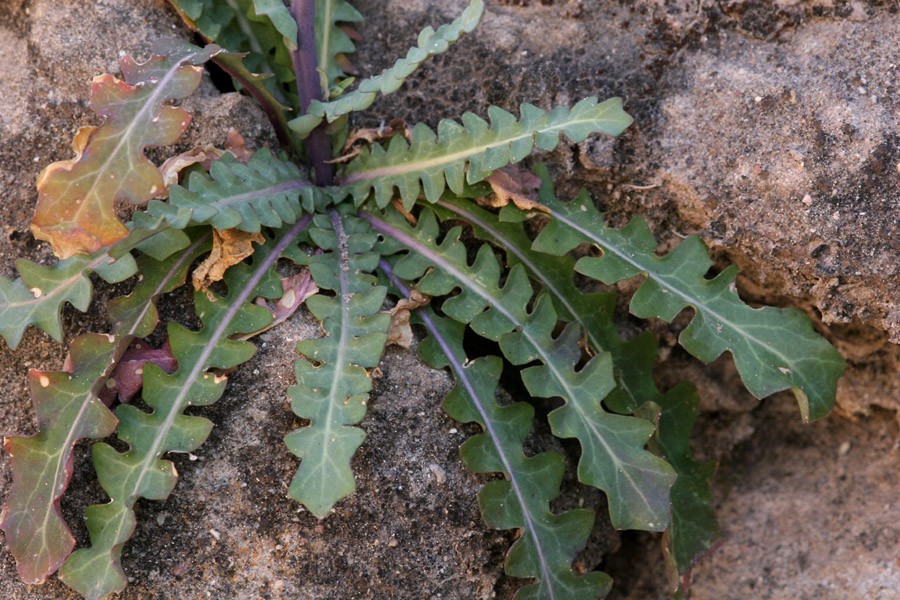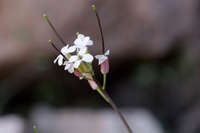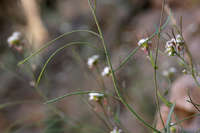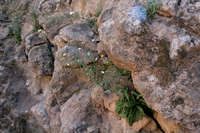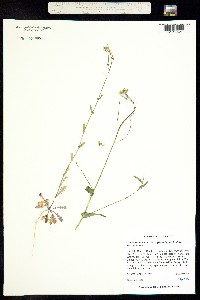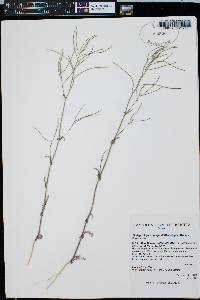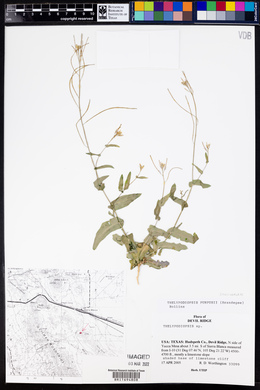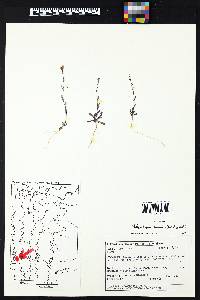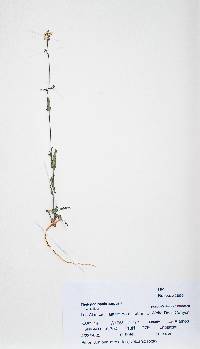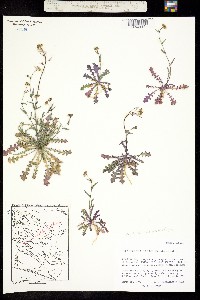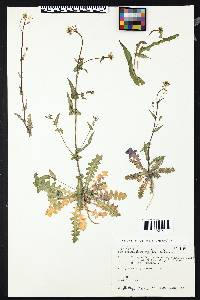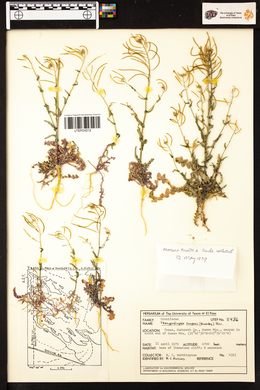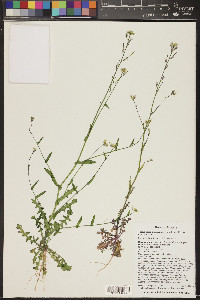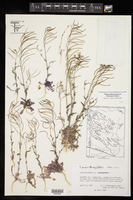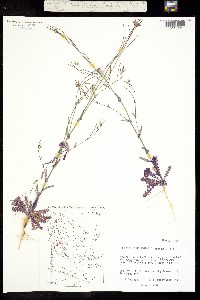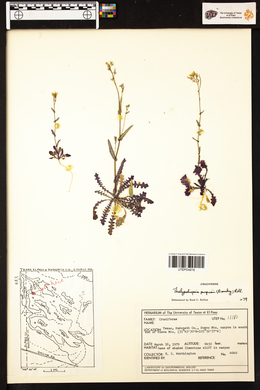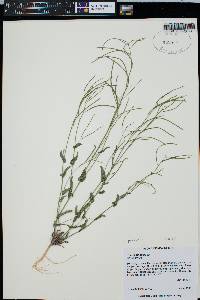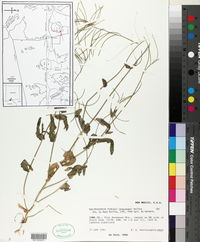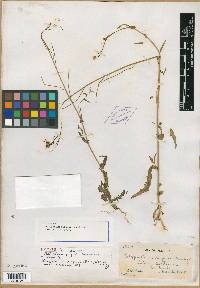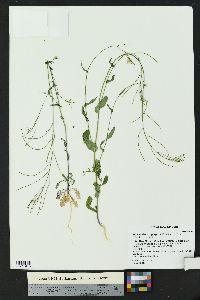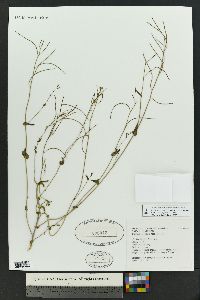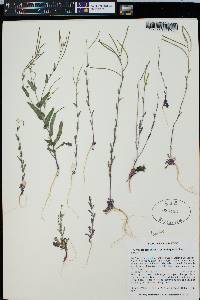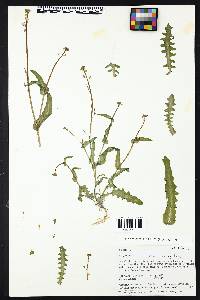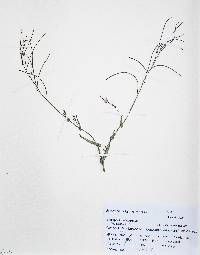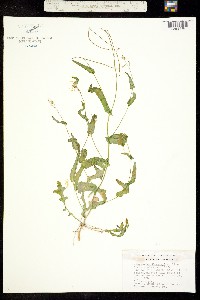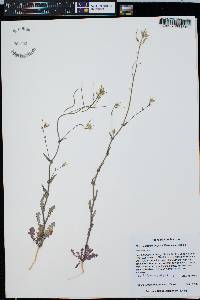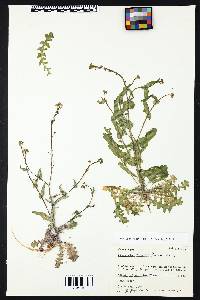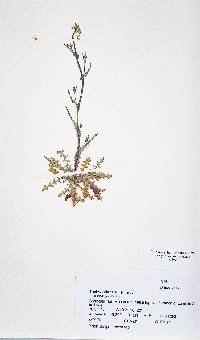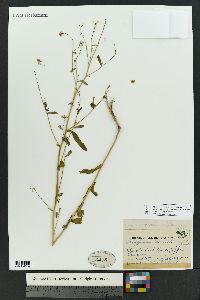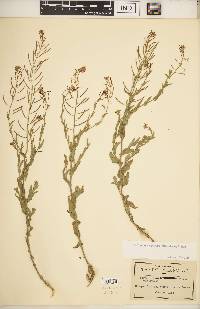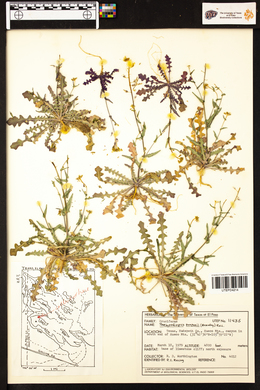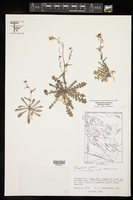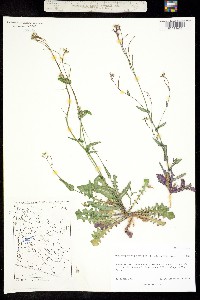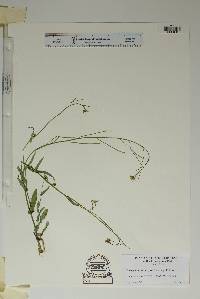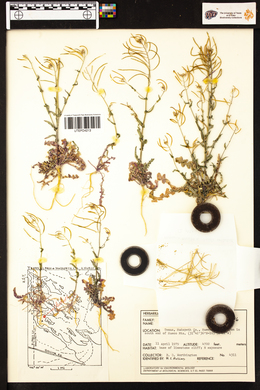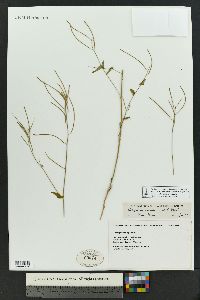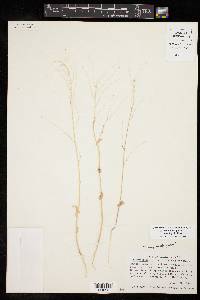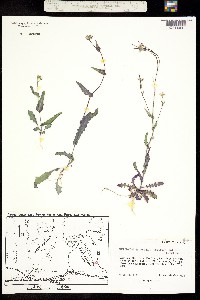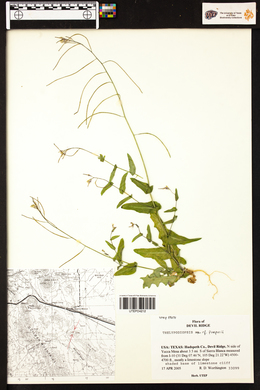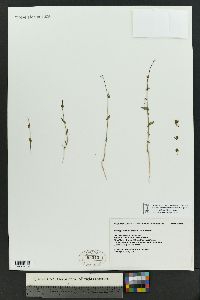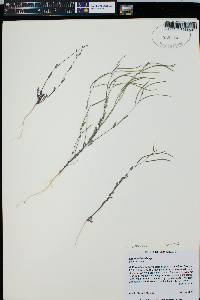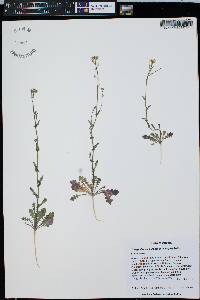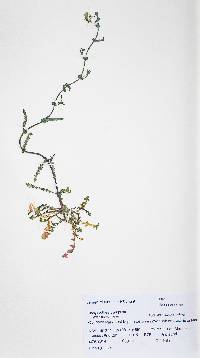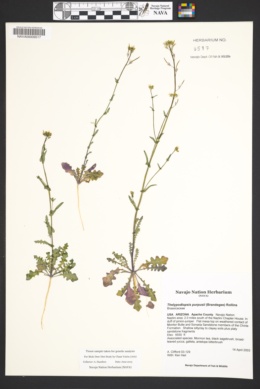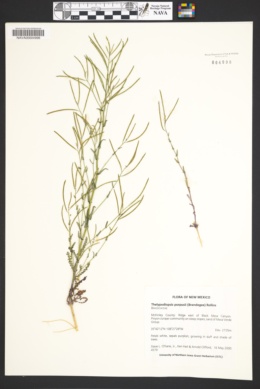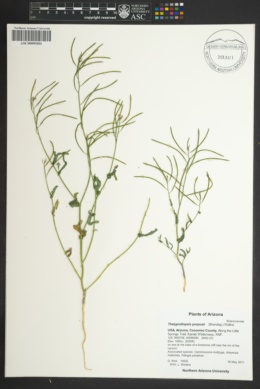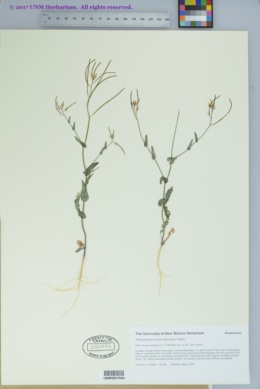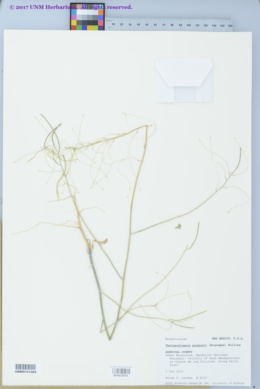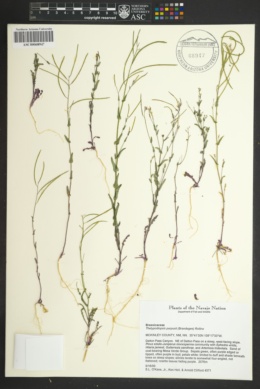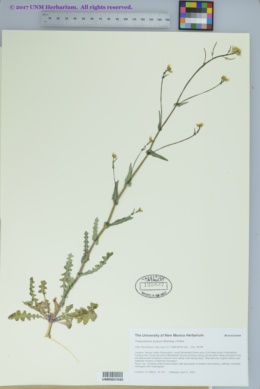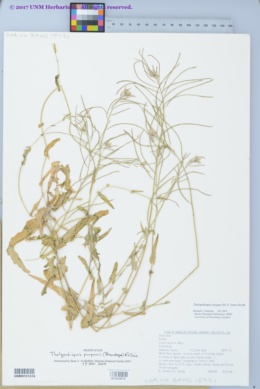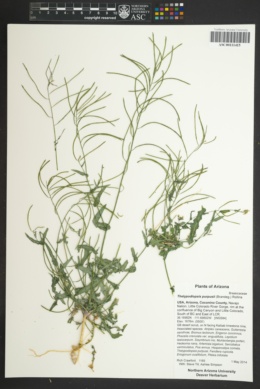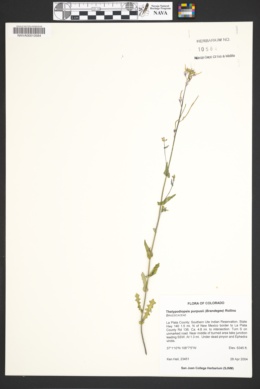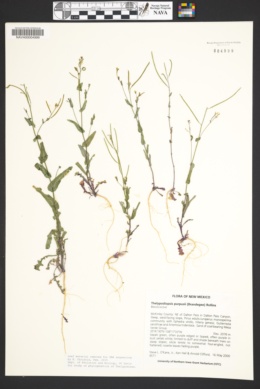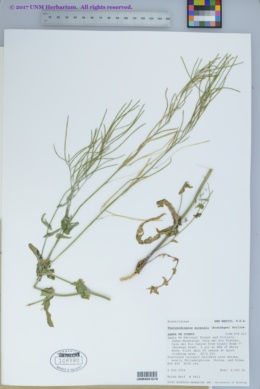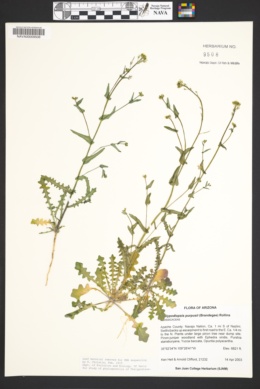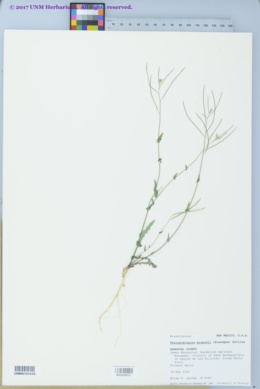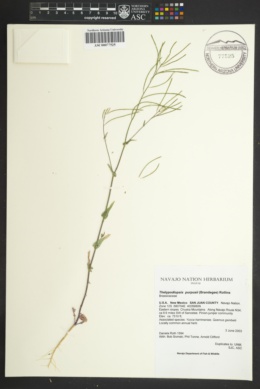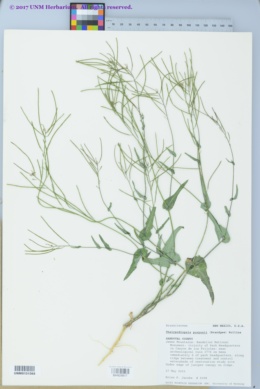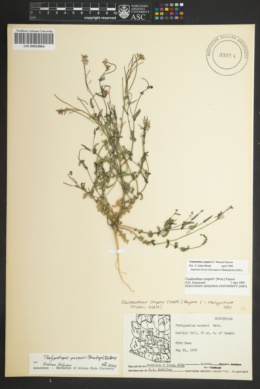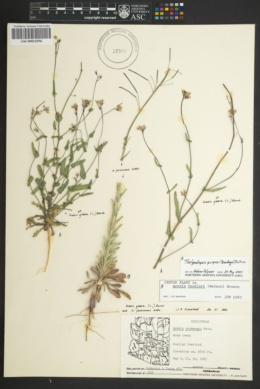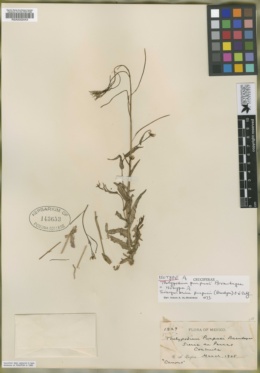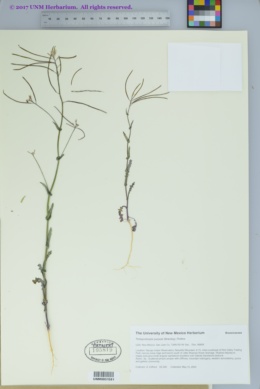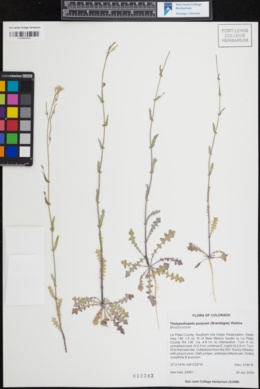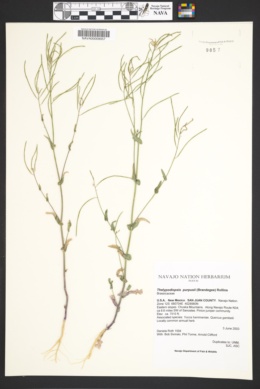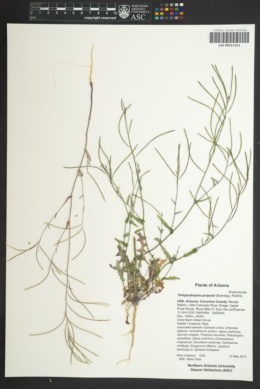
|
|
|
|
Family: Brassicaceae
Purpus' tumblemustard, more...Purpus' tumble-mustard
[Sisymbrium kearneyi Rollins, moreSisymbrium purpusii (Brandegee) O. E. Schulz, Sisymbrium vernale (Woot. & Standl.) O.E. Schulz, Thelypodium purpusii Brandegee, Thelypodium vernale Woot. & Standl.] |
Annuals; (often glaucous), glabrous throughout. Stems unbranched or branched distally, 1.5-5(-7) dm. Basal leaves (soon withered); not rosulate; petiole 0.5-3 cm; blade oblanceolate, 1.5-9 cm × 5-30 mm, margins pinnatifid to dentate-sinuate. Cauline leaves (proximalmost) petiolate or (distal) sessile; blade (proximalmost) oblanceolate, (distal) ovate to oblong, base subamplexicaul or auriculate, margins (proximalmost) pinnatifid to dentate-sinuate, or (distal) entire. Racemes lax. Fruiting pedicels ascending to divaricate, straight, 3-7(-10) mm. Flowers: sepals erect, green or purplish, 3-4.5 × 0.7-1.2 mm; petals white, oblanceolate, 4-5.5 × 1-1.5 mm, claw 2-3 mm; median filament pairs 3-4 mm; anthers ovate, 0.5-0.8 mm; gynophore 0.2-0.4 mm. Fruits divaricate to ascending or spreading, straight or curved, torulose, 3-6.5 cm × 1-1.2 mm; ovules 46-114 per ovary; style subclavate, 0.7-1.5 mm; stigma entire or obscurely 2-lobed. Seeds 0.9-1.2 × 0.5-0.7 mm. Flowering Feb-May. Juniper woodlands, rocky slopes, shale grounds, loose gypsum, barren areas, clay banks of rocky hillsides, shrub communities; 1400-2100 m; Ariz., N.Mex., Tex.; Mexico (Coahuila). FNA 2010, Heil et al. 2013, Allred and Ivey 2012 Duration: Annual Nativity: Native Lifeform: Forb/Herb General: Annual herb, 15-70 cm tall, from a slender taproot; herbage glabrous, often glaucous. Leaves: Basal leaves petiolate, not arranged in a rosette, early-withering; stem leaves alternate, sessile, with auriculate-clasping bases; blades oblanceolate to ovate or oblong, 1-9 cm long, the margins pinnately lobed to wavy or toothed; uppermost leaves entire. Flowers: White and green or purple, in lax, few-flowered terminal racemes; pedicels straight, ascending in flower and ascending to spreading in fruit, 3-10 mm long; sepals 4, erect, green, white, or purplish, 3-5 mm long; petals oblanceolate, 4-6 mm long, white. Fruits: Capsules narrowly linear, 3-7 cm long and 1 mm diameter, straight or curved, constricted between the seeds; seeds oblong, 1 mm long, brown. Ecology: Found in juniper woodlands, rocky slopes, shale grounds, loose gypsum, barren areas, clay banks of rocky hillsides, and shrub communities, from 4,500-7,000 ft (1400-2100 m); flowers February-May. Distribution: AZ, NM, TX; south to n MEX Notes: This mustard of middle-elevation woodlands is distinguished by its flowers which are only about half a centimeter tall and have 4 white petals and 4 sepals which can range from green to purple to white. Note also the basal leaves which are evenly pinnately lobed along both edges, the upper leaves which clasp the stem, and the long slender seed pods which are slightly constricted between the seeds. The species is found throughout New Mexico, northern Arizona, and into west Texas, though it does not seem particularly common in any part of its range. T. vaseyi has similar flowers with purplish sepals, but the leaves do not clasp the stem. T. aurea has flowers with yellow petals and sepals. Ethnobotany: Unknown Etymology: Thelypodiopsis is a diminutive of Thelypodium, another genus in the mustard family; purpusii means purple. Editor: AHazelton 2017 |
This project was made possible in part by the Institute of Museum and Library Services [MG-70-19-0057-19].
Powered by Symbiota

